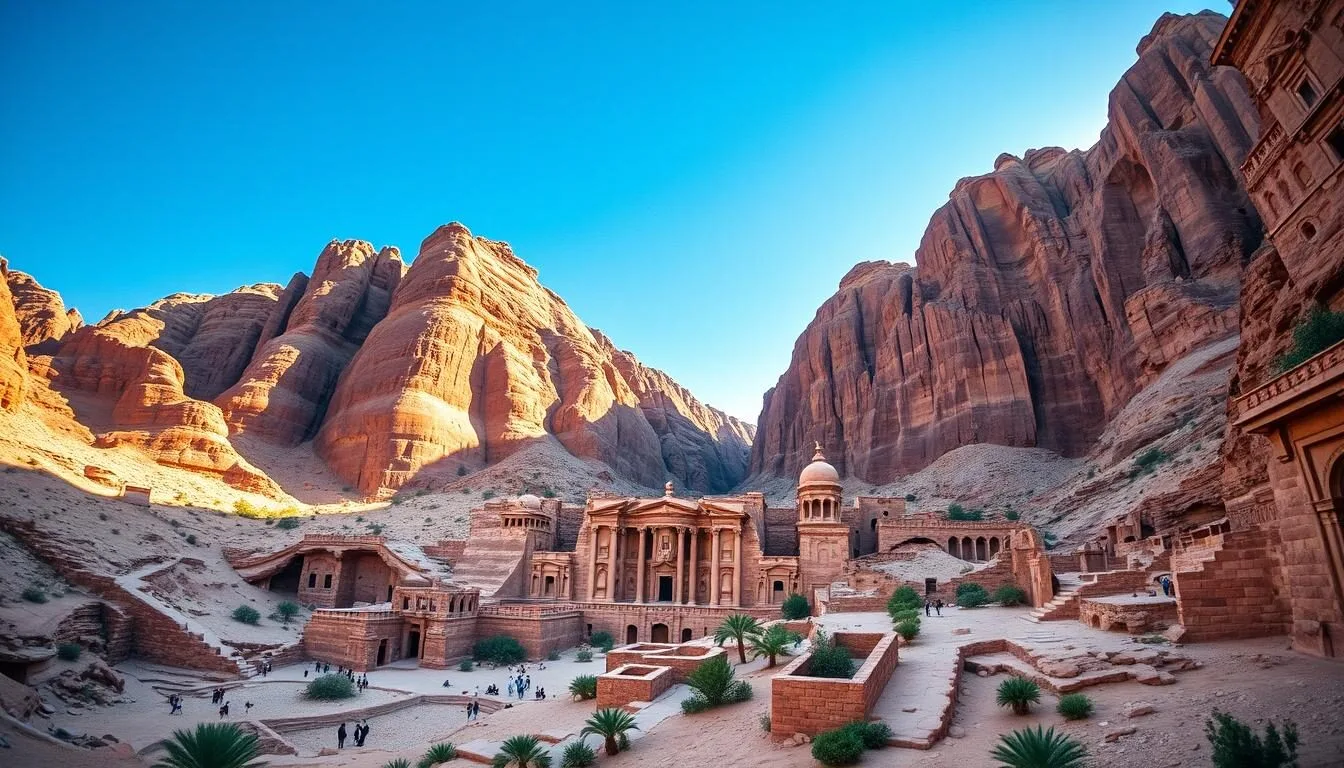✓ Accommodations✓ Flights✓ Rental Cars✓ Tours & Activities
You are about to embark on a journey through one of the world’s most iconic archaeological sites. Petra, a UNESCO World Heritage Site, attracts visitors from around the globe with its rich history and breathtaking landscapes.
Built by the Nabataeans around 300 BC, Petra was later occupied by the Romans. For centuries, it remained forgotten until its rediscovery in 1812. With only about 15% of the city excavated, you can explore the famous Treasury and Monastery, as well as hidden gems and ancient tombs.
To truly experience Petra, plan to spend at least a day exploring this ancient city. With two days, you can take your time to hike to spectacular viewpoints and walk through the dramatic Siq canyon.
Discovering the Ancient City of Petra
With its intricate rock-cut architecture, Petra is an unforgettable destination that beckons travelers from around the world. As you explore this ancient city, you’ll uncover the rich history and cultural significance that have made Petra a wonder of the world.
What Makes Petra a Wonder of the World
Petra’s status as one of the New Seven Wonders of the World is attributed to its extraordinary architecture, historical significance, and the engineering marvel of buildings carved directly into rose-colored sandstone cliffs. The unique geological formations, with their distinctive pink, red, and orange sandstone, create a dramatic backdrop for the ancient structures. Visitors can marvel at the intricate facades and monumental buildings that have stood the test of time.
| Historical Period | Key Features | Notable Events |
|---|---|---|
| Nabataean | Sophisticated water management systems, rock-cut architecture | Establishment as a major trading center |
| Roman | Incorporation of Roman architectural styles, expansion of the city | Annexation by the Roman Empire |
| Byzantine | Construction of churches, continued use of the city as a religious center | Decline of the city following earthquakes |
Brief History of the Lost City
The lost city of Petra was only rediscovered 200 years ago after being buried due to the effects of a large earthquake in 363 AD. Before that, this prehistoric city lived through many periods and is believed to have existed since the 1st century BC. Visitors today come to marvel at the ancient structures, churches, tombs, and theatres that have stood for thousands of years, with some only recently uncovered in the last 30 years. In fact, it’s believed that just 15% of the city’s structures have been excavated, meaning an incredible 85% of buildings still remain underground.
Located near the modern town of Wadi Musa, Petra serves as a gateway for visitors and provides accommodation and services for tourists exploring the ancient ruins. You can spend a day or several days exploring the vast area, with hundreds of tombs, temples, and other structures to discover. Hiring a guide can enhance your experience, providing insights into the history and significance of the site.
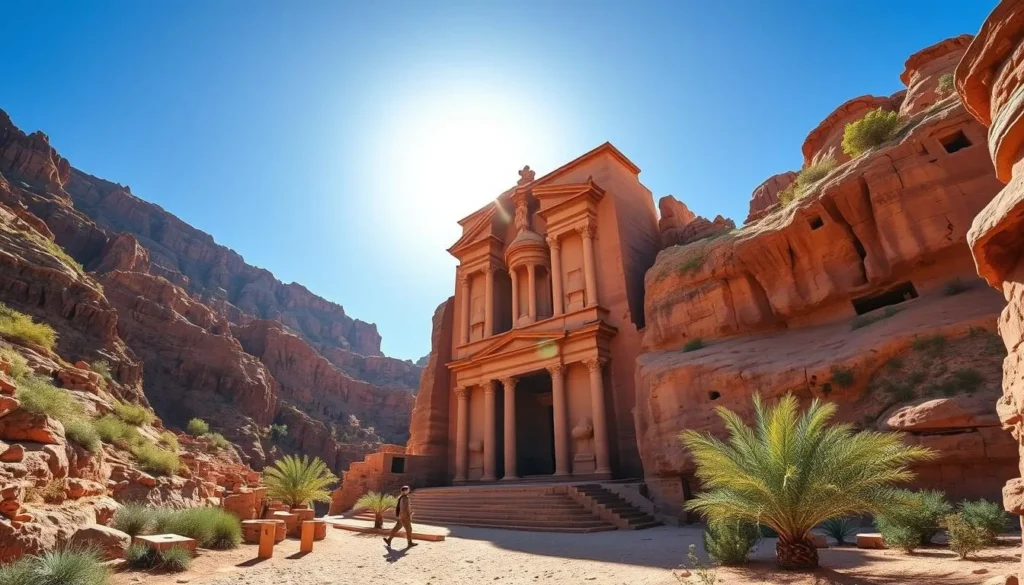
Planning Your Visit to Petra
Before you head to Petra, understanding the basics can enhance your adventure. With its ancient structures and vast desert landscapes, Petra is a destination that requires some planning to fully appreciate.
Best Time to Visit Petra
The best times to visit Petra are during the spring (March to May) and fall (September to November), when temperatures are pleasant for exploring. October tends to be the busiest month, so if you’re looking for fewer crowds, consider visiting in the shoulder season. Summer months can be extremely hot, with temperatures reaching up to 40°C/104°F, making hiking uncomfortable unless you start very early in the morning.
Entrance Fees and Jordan Pass
The entrance fee to Petra is 50 JOD ($70) for one day. Visiting for two days is better value at 55 JOD ($78), and a three-day pass costs 60 JOD ($85). Children under 12 enter for free. A more economical option is to purchase the Jordan Pass online, which includes your Jordan visa (worth 40 JOD), a two-day entrance to Petra, and access to 40 other attractions throughout Jordan for 75 JOD ($105).
How Many Days to Spend in Petra
Most visitors need at least one full day to see Petra’s highlights, but two days is ideal to explore at a comfortable pace and include hikes to viewpoints and less-visited areas. Arriving at the site when it opens at 6:00 AM allows you to experience the Siq and Treasury without crowds and before the midday heat. It’s recommended to stay in the town of Wadi Musa, adjacent to the Petra entrance, for easy access to the site.
The Siq: Gateway to Petra’s Wonders
Your journey through Petra begins with a dramatic passage through the Siq, a natural wonder that captivates visitors worldwide. The Siq is a stunning, rose-red gorge that stretches 1.2 kilometers, leading you to the Treasury and other ancient structures.
Walking Through the Dramatic Canyon
As you walk through the Siq, you’re surrounded by towering canyon walls that rise up to 80 meters high, creating an atmosphere of suspense and anticipation. The trail takes you on a winding path through this natural marvel, with the rock formations displaying vibrant hues of pink, red, yellow, and orange. The walk typically takes around 30-45 minutes at a leisurely pace, giving you ample time to absorb the breathtaking scenery.
Ancient Water Systems and Carvings
Along the way, notice the ingenious water management systems carved into the rock walls, a testament to the advanced engineering skills of the Nabataeans. You’ll also spot various carvings, niches, and votive tablets, some representing deities worshipped by the Nabataeans. These features add to the Siq’s allure, making your journey even more fascinating.
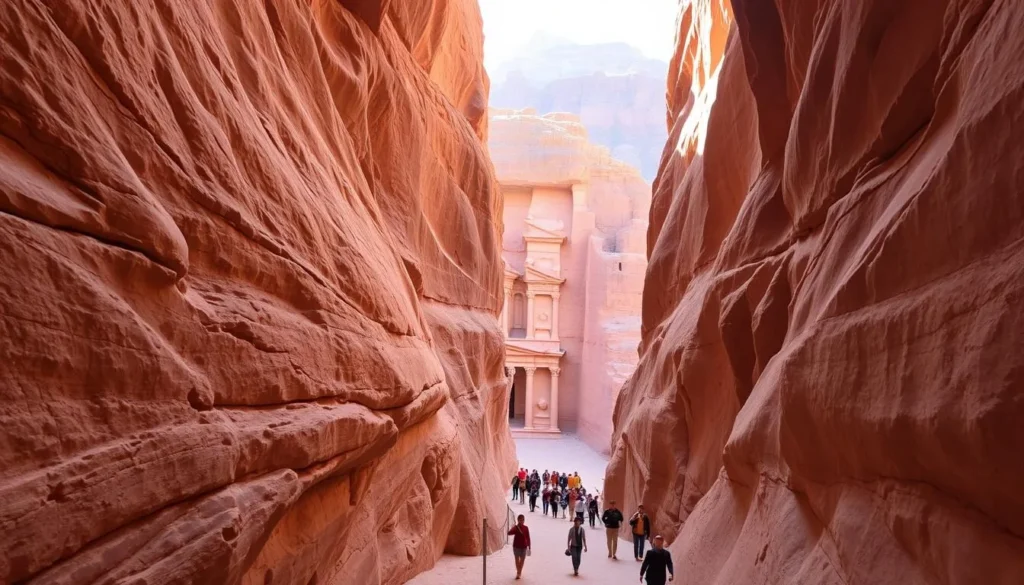
For the best experience, consider walking through the Siq early in the morning or late in the afternoon to avoid crowds and enjoy optimal lighting conditions.
Petra, Jordan: Best Things to Do – Top Picks
The ancient city of Petra is a must-visit destination, boasting an array of captivating attractions that will leave you in awe. As you explore this historical site, you’ll discover a multitude of exciting experiences that showcase the rich history and culture of the Nabataeans.
The Treasury (Al-Khazneh)
The Treasury is Petra’s most iconic structure, a 40-meter high façade intricately carved into the rose-colored sandstone cliff. Despite its name, it was actually built as a tomb for a Nabataean king. To get a unique perspective, hike up to one of the three viewpoints nearby.
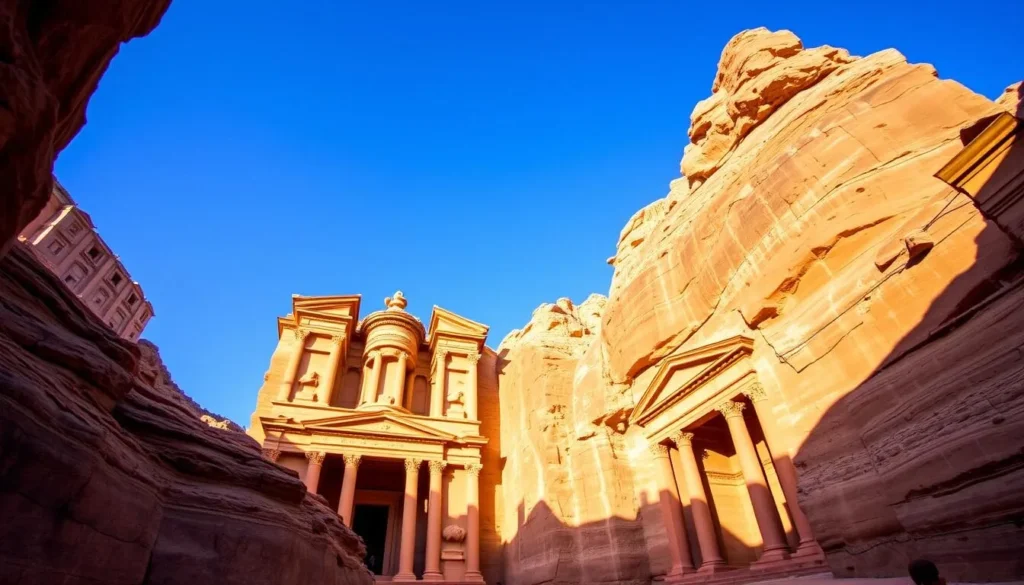
The Monastery (Ad-Deir)
The Monastery is one of the largest and most beautiful structures discovered in Petra, measuring 50 meters wide and 45 meters high. This mammoth building requires a challenging climb of 800+ steps but rewards visitors with one of Petra’s most impressive monuments and spectacular desert views.
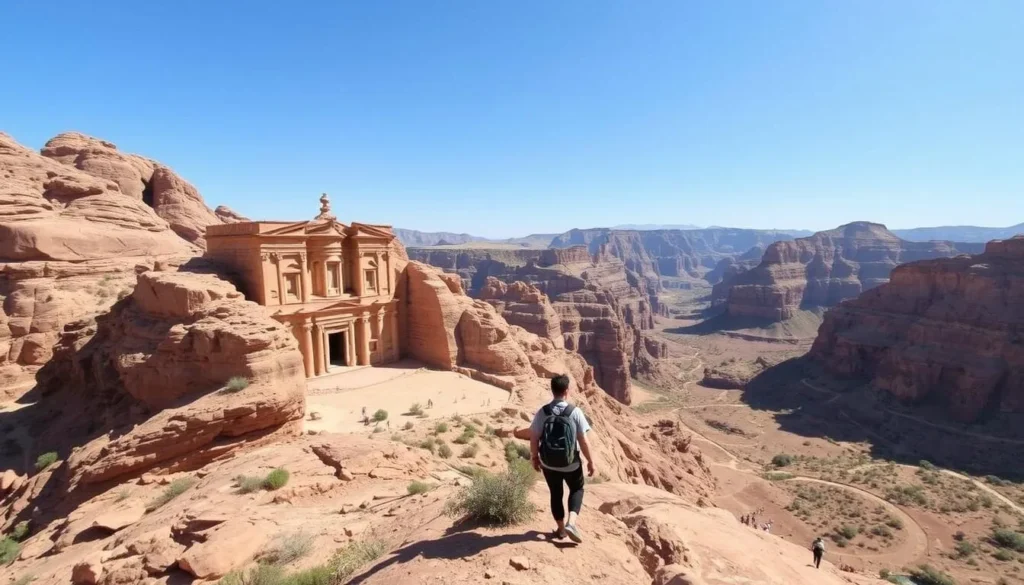
Royal Tombs
The Royal Tombs are a collection of elaborate façades carved into the eastern cliff face, including the Urn Tomb, the Silk Tomb, the Corinthian Tomb, and the Palace Tomb. Each tomb showcases different architectural styles, making them a fascinating sight to explore.
The Great Temple and Colonnaded Street
The Great Temple complex and the Colonnaded Street represent the Roman influence on Petra after 106 AD, with their classical architectural elements. The Colonnaded Street is the remains of the Romans who took control over Petra, and their road still remains today, along with several columns lining the side of the road.
To make the most of your visit, consider the best times to visit each attraction. The Treasury is best visited early in the morning before crowds arrive, while the Monastery is ideal in the morning before the midday heat. The Royal Tombs are particularly stunning in the late afternoon when the setting sun illuminates the colorful sandstone.
As you explore these top attractions, remember that they are spread throughout the ancient city, requiring significant walking between them. Comfortable footwear and plenty of water are essential for enjoying these highlights.
Must-Do Hiking Trails in Petra
For adventure-seekers, Petra’s hiking trails are a must-try, offering a unique perspective on this ancient city. With its majestic mountains and valleys, Petra is a hiker’s paradise, featuring trails that range from moderately challenging to strenuous.
High Place of Sacrifice Trail
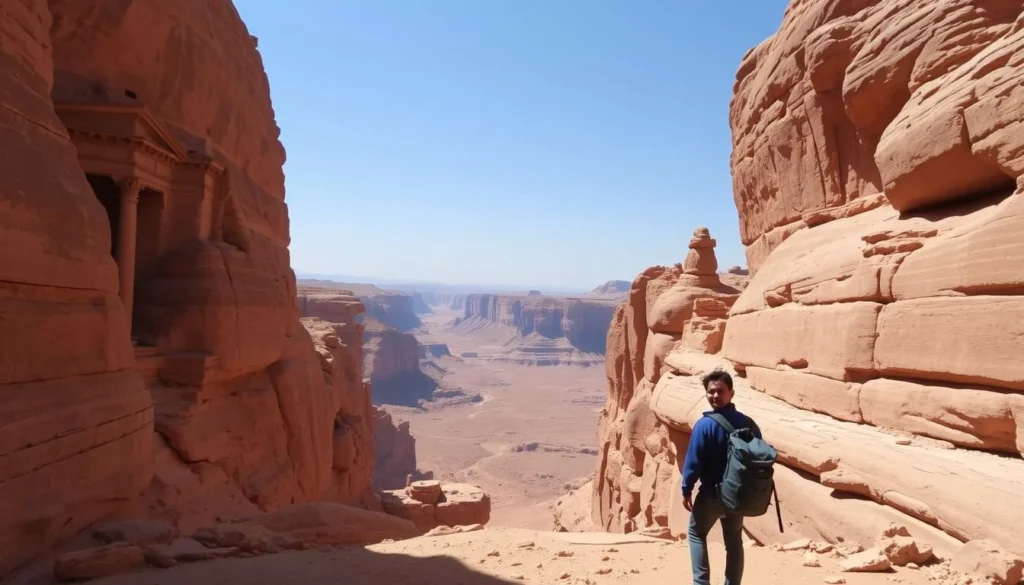
The High Place of Sacrifice Trail is a moderately challenging hike that takes about 40 minutes of climbing stairs to reach the top of Jebel Madbah Mountain. You’ll find an ancient altar and panoramic views 170 meters above the main valley. Continuing along this trail through Wadi Farasa offers a rewarding descent with fewer crowds, and the chance to discover hidden tombs and monuments not visible from the main path.
Al-Khubtha Trail (Treasury Viewpoint)
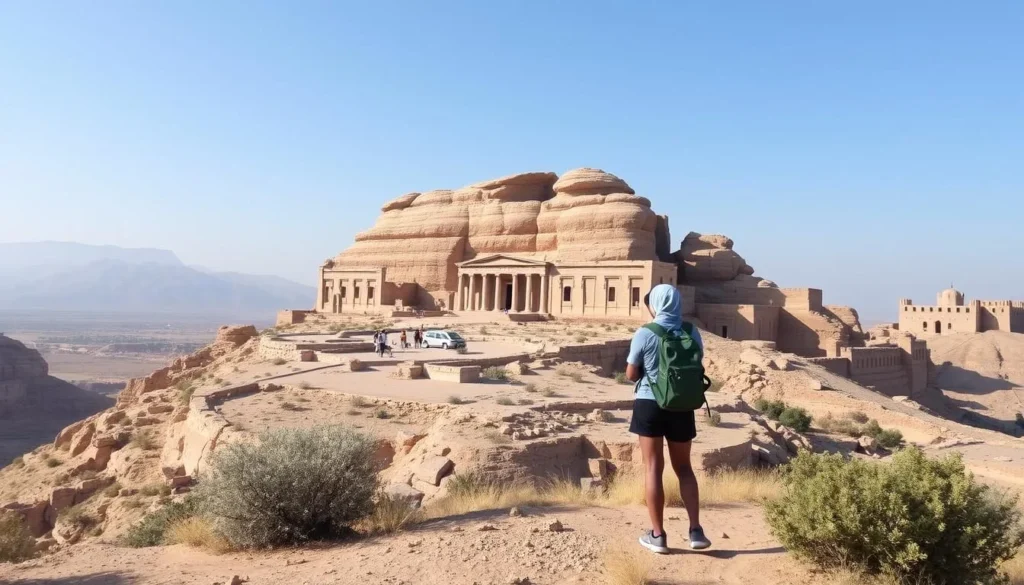
The Al-Khubtha Trail is a 1.5-hour round-trip hike with approximately 600 steps that rewards hikers with the iconic view of the Treasury from above. This trail begins near the Royal Tombs and requires careful navigation to find the correct starting point. It’s a great way to experience Petra from a different perspective.
Little Petra Back Door Trail
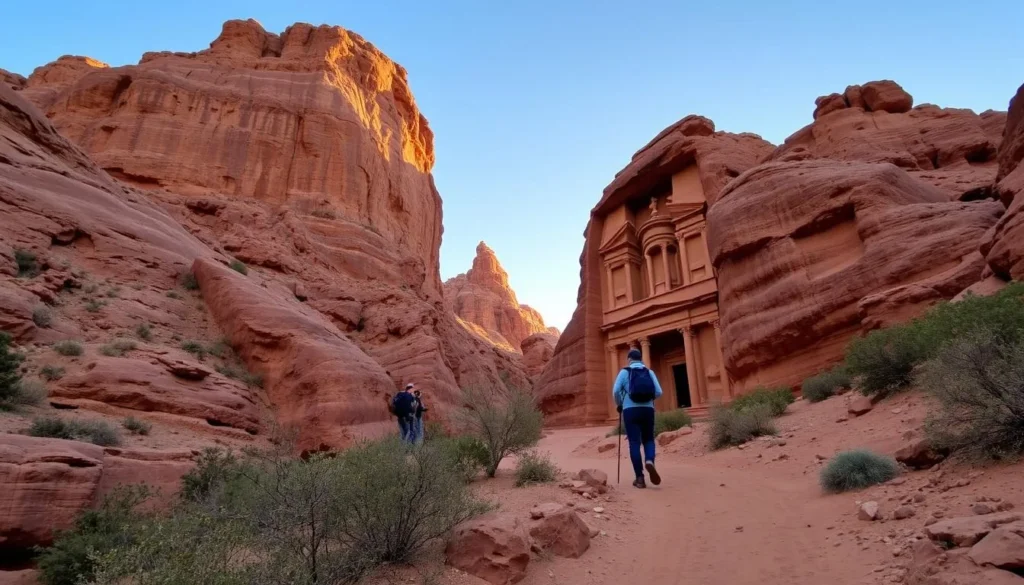
The Little Petra Back Door Trail is an alternative 8km route that approaches the Monastery from behind, avoiding the crowded main entrance. This trail offers unique desert landscapes and canyon views along the way. It’s recommended to do this trail with a guide, as the first part isn’t well signposted.
To fully appreciate these hiking trails, consider allocating two days in Petra. Attempting all of them in a single day would be extremely tiring and might not leave time to properly appreciate each destination. Start your hikes early in the morning to avoid the midday heat, especially during summer months, and carry plenty of water as the trails have limited shade and few refreshment options.
Wear proper hiking shoes for these trails as they involve uneven terrain, loose rocks, and sometimes steep steps without handrails, making them challenging in inappropriate footwear. While these trails offer the most spectacular views in Petra, they are less crowded than the main path, allowing for a more peaceful experience and better photography opportunities away from the masses of day visitors.
Beyond the Main Trail: Hidden Gems
To truly experience Petra, you need to look beyond the main trail and explore its lesser-known wonders. While the main attractions are undoubtedly breathtaking, there’s more to this ancient city than meets the eye.
Little Petra (Siq Al-Barid)
Little Petra, also known as Siq Al-Barid, is a smaller but equally fascinating archaeological site located just 10 minutes from the main Petra site. It’s included with your Petra entrance ticket and offers a more intimate experience with fewer visitors.
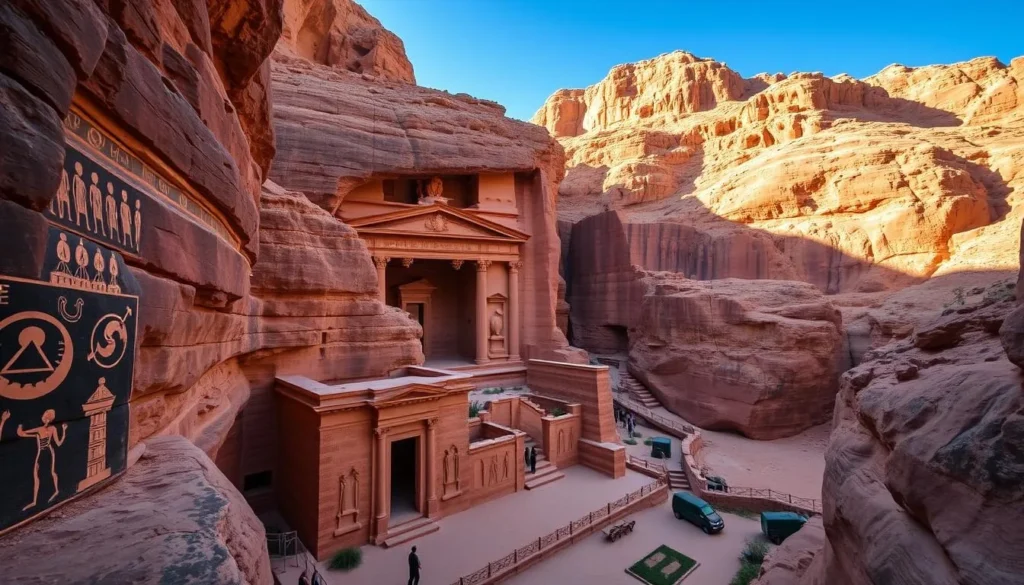
This site features a 450-meter canyon with three open areas, ancient cave dwellings, and remarkably preserved 2000-year-old Hellenistic wall paintings. The sun rarely penetrates the narrow gorge, earning it the nickname “Cold Canyon.”
Petra by Night Experience
The Petra by Night experience is a magical way to see the ancient city. The path through the Siq to the Treasury is illuminated by 1,500 candles, creating an enchanting atmosphere accompanied by traditional Bedouin music and storytelling.
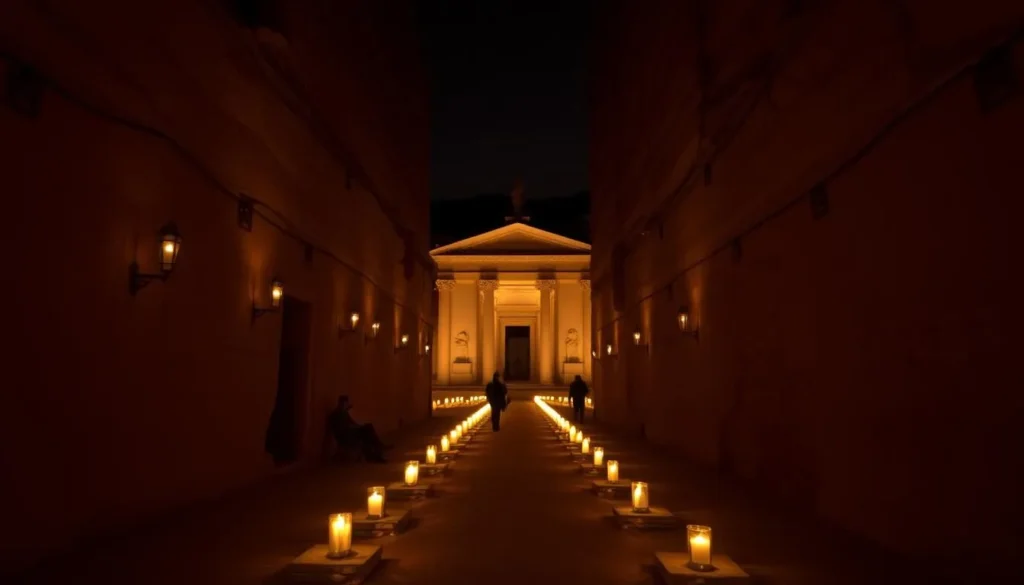
This unforgettable candlelit night show runs every Monday, Wednesday, and Thursday, starting at 8:30 PM. Tickets cost around 17 JD per person and can be purchased from the Visitor Center.
Visiting Little Petra and experiencing Petra by Night can provide a unique perspective on this ancient city, making your visit to Wadi Musa even more memorable.
Where to Stay and Eat in Wadi Musa
As the gateway town to Petra, Wadi Musa offers a range of accommodations to suit different budgets and preferences. When planning your visit, it’s essential to consider where to stay and eat in this charming town.
Best Hotels Near Petra Visitor Center
Staying close to the Petra Visitor Center is crucial due to Wadi Musa’s steep topography. Hotels in the town center require a challenging uphill walk or taxi rides, making proximity to the Visitor Center a top priority.
For budget-friendly options, consider Esperanza Petra, which offers comfortable rooms within a 5-minute walk of the entrance. Prices start at around $55 per night, and rooms come with balconies offering stunning sunset views.
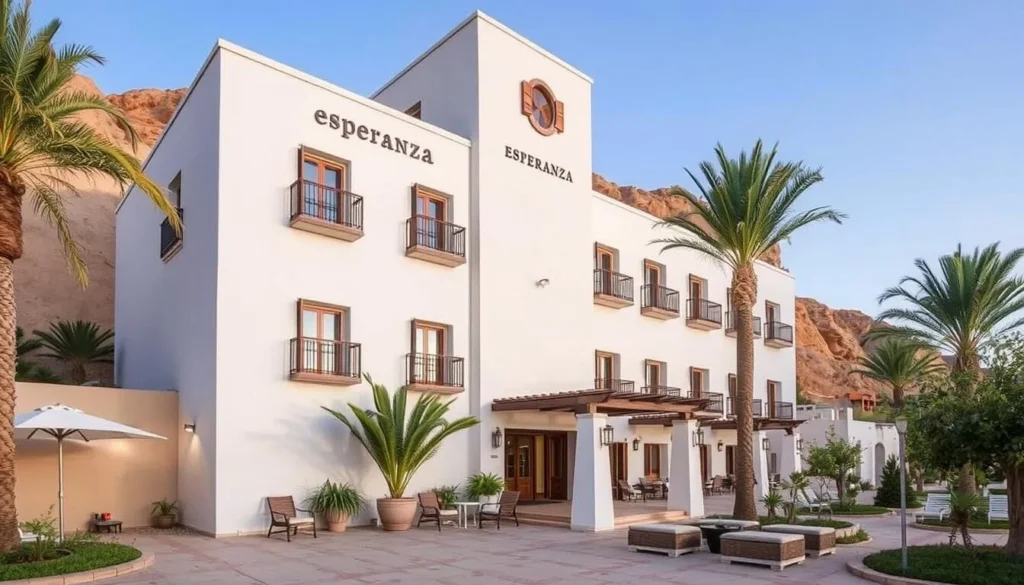
For a mid-range option, Petra Moon Hotel is an excellent choice, located just 150 meters from the Visitor Center. Modern rooms start at around $130 per night and feature private balconies, a seasonal rooftop pool, and hot tub.
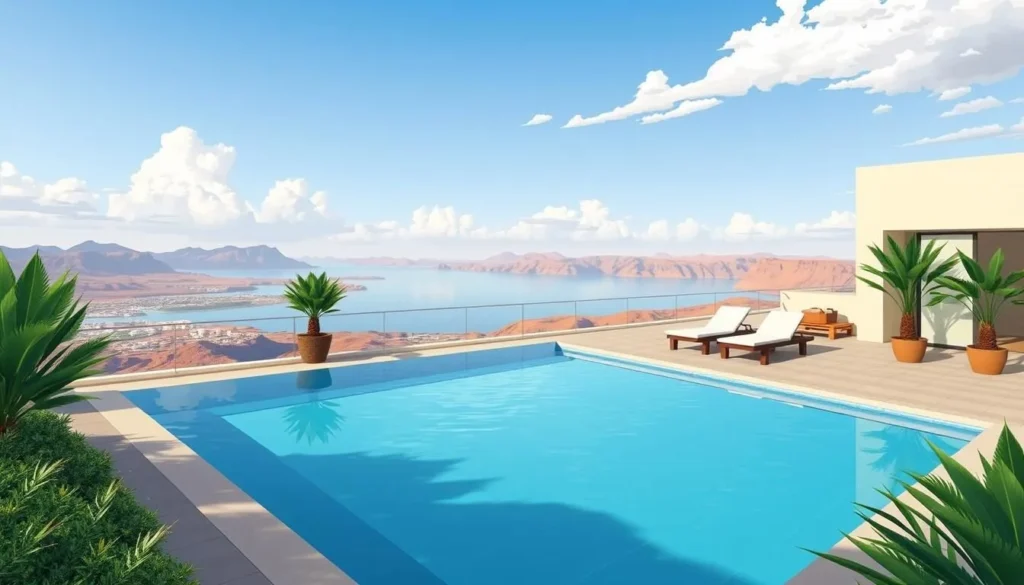
For luxury, Mövenpick Resort Petra is the top choice, situated directly across from the Visitor Center. This 5-star hotel offers beautifully decorated rooms, multiple restaurants and bars, a spa, and an outdoor pool.

Recommended Restaurants in Wadi Musa
For authentic Jordanian cuisine, head to Abu Elias Restaurant in the heart of Wadi Musa. Their menu features traditional dishes like mansaf and maqluba, with generous portions and complimentary appetizers.
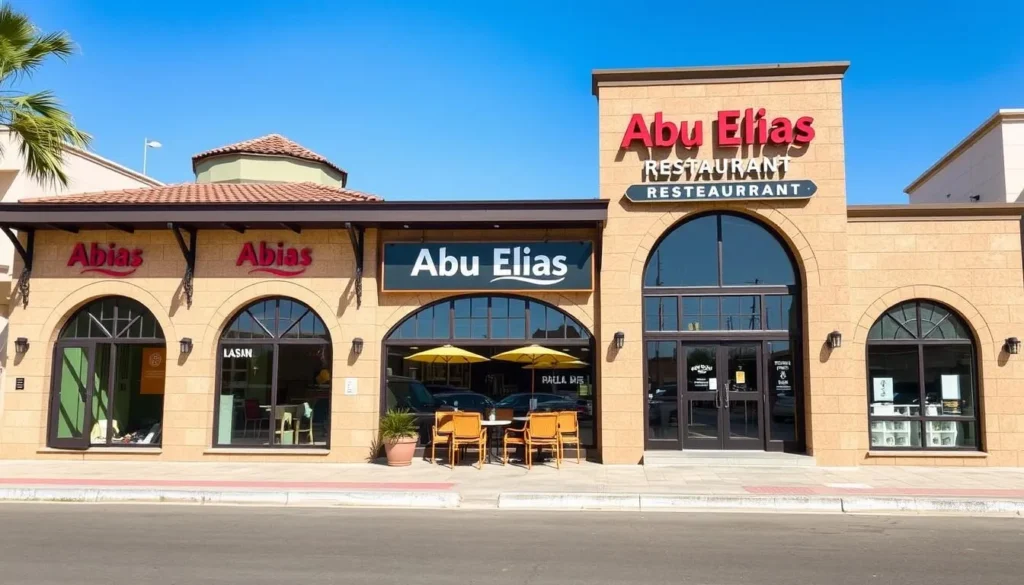
For budget-friendly eats, Mr. Falafel is a great option, offering delicious falafel sandwiches and shawarma. Try their cheesy stuffed falafel and hearty meal options, which can be delivered to your hotel.

It’s advisable to book your accommodations well in advance, especially during peak tourist season (spring and fall), as the best-located hotels fill up quickly.
Getting to Petra and Safety Tips
Before you start your journey to Petra, it’s essential to know your transportation options. You have two main choices to get to Petra from Amman: the JETT Bus or a private transfer.
From Amman to Petra
If you’re traveling solo or on a budget, the JETT Bus is the most affordable option, costing 10 JD ($14) one way. You can book tickets directly through the JETT website. However, there’s only one bus per day, departing Amman at 6:30 AM and returning from Petra at 5:00 PM.
Alternatively, you can hire a private driver or taxi for a more flexible journey. This option costs around 60-90 JD ($82-$127) depending on your pickup and drop-off locations. You can book through services like Petra Crown Transfers or Bookaway.com.
Getting Around Within Petra
Once you arrive at Petra, you’ll need to decide how to get around the site. The main trail is approximately 8 km from the Visitor Center to the Monastery, and it’s primarily explored on foot. If you have mobility issues, you can take an electric buggy to the Treasury for 15 JD one way or 25 JD round trip.
Is Petra Safe to Visit?
Petra is considered a safe destination for tourists, including solo female travelers. You don’t need to worry about security, but it’s still important to take environmental precautions like staying hydrated, protecting yourself from the sun, and wearing suitable footwear for hiking. Dress modestly, covering your shoulders and knees, out of respect for local culture.
By being aware of your transportation options and taking necessary safety precautions, you can have a smooth and enjoyable trip to Petra.
Essential Tips for an Unforgettable Petra Experience
A visit to Petra can be a once-in-a-lifetime experience with the right preparation. To ensure you make the most of your trip, consider the following tips.
First, proper footwear is crucial. Wear sturdy hiking shoes or athletic sneakers with good traction to handle the uneven terrain, steep steps, and sometimes slippery surfaces. You’ll likely walk 20,000+ steps per day.
Dress modestly and comfortably with lightweight, breathable fabrics that cover your shoulders and knees. Layers can help you adjust to changing temperatures throughout the day.
- Arrive at opening time (6:00 AM) to experience the Siq and Treasury in magical morning light without crowds.
- Stay until sunset to see the rose-colored rocks transform with the changing light.
- Purchase the Jordan Pass for significant savings on entrance fees and other attractions.
- Bring plenty of water, snacks, and a small first aid kit.
By following these tips, you can have a more enjoyable and memorable experience at Petra. Respect the site by not climbing on ruins or removing artifacts, and consider hiring a local guide for historical and cultural insights.
The above is subject to change.
Check back often to TRAVEL.COM for the latest travel tips and deals.
